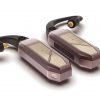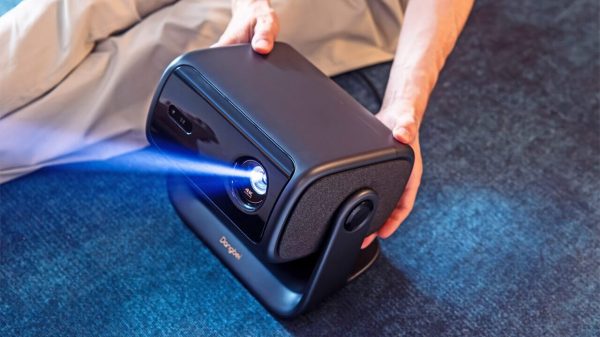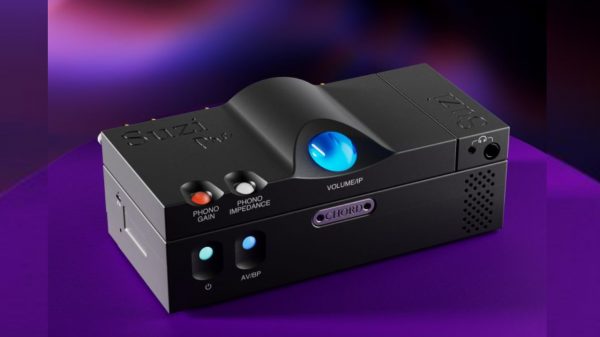The road to Hell is often paved with good intentions; a lesson that more than a few high-end audio brands have learned the hard way over the years. Being acquired can be a huge shot in the arm for brands in the growth stage looking for investment capital to expand their manufacturing and R&D capabilities and marketing efforts. For those that are watching their market share shrink and short-term financial stability become an issue — being acquired is more about survival.
CORSAIR’s decision to acquire Drop might look like a win-win on the surface but we have some questions about how it will impact its headphone business.
Founded in 2011, Drop (formerly known as Massdrop) develops and sells a portfolio of peripherals and enthusiast products, with the majority of its business coming from customized “DIY” keyboards, aftermarket designer keycaps and desktop accessories.
Drop leveraged the insights of its members to develop its current collection of over 120 colorful, classic, and iconic sets offering an incredible degree of personalization to mechanical keyboard users from all walks of life.
It recently expanded its portfolio to include a range of so-called Battlestation products to offer an even wider assortment of designer products for the desk and workspace.
CORSAIR is a leader in high-performance gear for gamers and content creators; its founders announced on July 17, 2023 that it has reached an agreement to acquire certain assets from Drop, a leading privately held peripheral developer best known for its customizable mechanical keyboards and switches, and its millions-member strong enthusiast community. Financial terms of the non-material, all-cash transactions were not disclosed.
Dropping Some History
So what does this mean for Drop’s headphones and all of its customers who are probably wondering about warranty support.
I became acquainted with Massdrop in 2017 when a friend told me about some of the deals he was getting through their group-buy program. There were several websites that popped up around the same time to leverage group purchasing power and most used a model of collecting commitments and payments, then purchasing in bulk once a minimum quantity was reached.

My first experience with Massdrop involved some purchases in the EDC and camping gear categories as headphones were not a big percentage of their initial offerings. That narrowed to keyboards, gaming accessories, headphones and knives; the last category was eventually dropped because it deviated so much from its core business.
Massdrop ultimately decided to become a manufacturer and began co-branding products with prominent names in the various markets. This transition allowed Drop to mass market these new co-branded headphones to their existing audience without the wait time normally associated with the group-buy model.
Taking a look at the website in 2023, there are no longer any single group buys with a minimum number of commitments listed. After the company narrowed its focus and moved away from this model, the decision was made to rebrand the company as “Drop.”
The decision to focus on co-branding and manufacturing was a boon to Drop with the introduction of collaborations with Fostex, Focal, Beyerdynamic, and Koss.
In most cases, the headphones were variations on existing models from the parent brands with slightly different tunings, removable cables, and other minor modifications to the designs.
There were also instances when the Drop community influenced the brand to make specific changes to popular headphones and these sold rather well.
The moment of truth for Drop arrived when Sennheiser and HiFiMAN came aboard.
Drop put together a deal where Sennheiser would provide drivers and oversight and Drop would assemble the headphones, take on warranty responsibilities, and handle the distribution and marketing.


Their first product was the HD6XX which was a hybrid version of the Sennheiser HD600 shell and HD650 drivers at a substantially lower price point.
The existing Sennheiser HD600 retailed for $400 USD and the HD650 between $500 and $550 at most outlets. The HD6XX was offered at $199 and at one point in pre-sale could actually be purchased for even less.
Prices for the HD6XX have inched up to $239 but still see frequent sale prices dip to its early price.
Once word spread that the HD6XX was essentially an HD650 that could be purchased for $199, sales exploded with the HD6XX quickly becoming one of Drop’s top sellers.
What followed was another collaboration with Sennheiser in the HD58X at an even lower price of $149.
This model was less of a direct competitor to anything in the Sennheiser line-up and instead was more of a tribute to the existing HD580 and it very quickly developed a following. The tuning emphasized the bass range and that change made it very popular at a much lower price.


The collaboration with HiFiMAN led to the release of the HE4XX at $189 and the HE5XX which listed for $229; both models were very similar to the existing HE400i and Deva Pro headphones.
There is also a Drop HE-X4 model that retails for $129 which incorporates the shell of the HE4XX and drivers from the HE5XX.
If you take a hard look through the Drop catalog, it becomes clear that they have collaborated with most of the major high-end players in the headphone market.
The news this week that CORSAIR has purchased “certain assets” from Drop has caused concern in the headphone community because Drop assumed the warranty for all of those collaborations.
Did CORSAIR actually purchase that side of the business and do they intend on getting into the headphone space?
The company has announced that they will honor the warranties of the existing products and that Drop will remain its own entity but there is a lot of apprehension in the Head-Fi space that things could change rather rapidly.
At the end of the day, this may push some to purchase the HiFiMAN and Sennheiser models directly from the two manufacturers who will honor their respective warranties and offer replacement parts.
Related Reading:



































